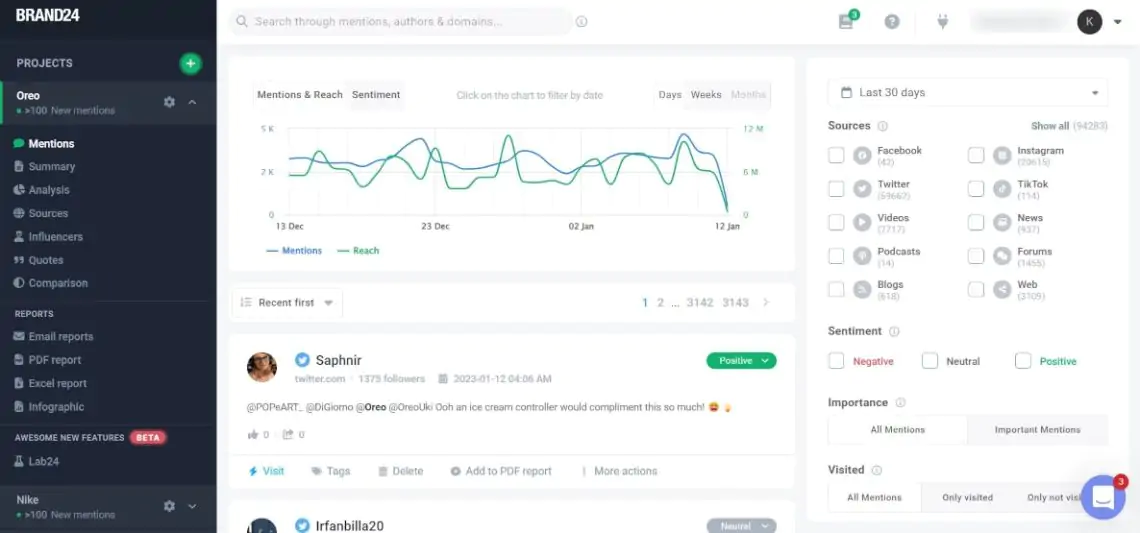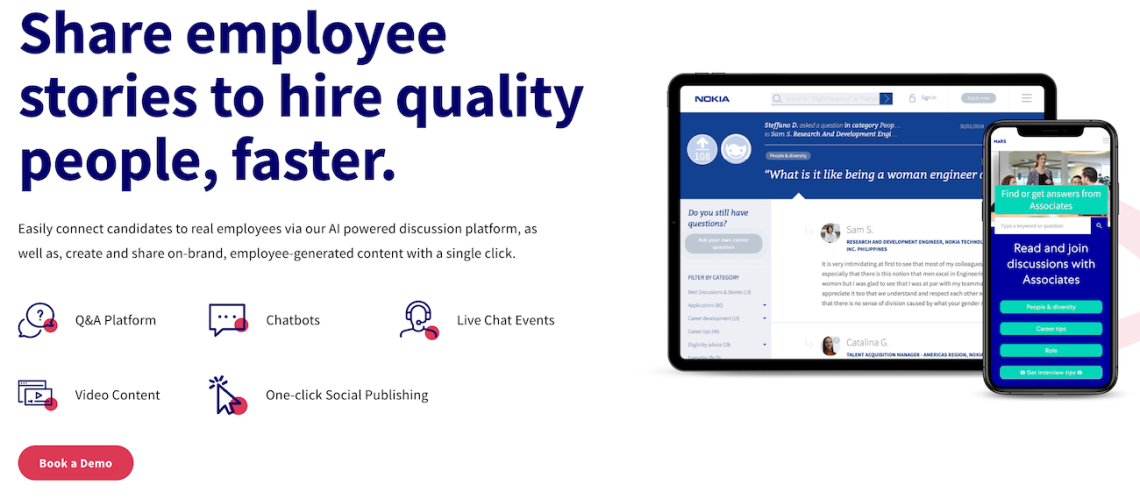What is Employer Branding? Definition and 3 Best Tools [2025]
Table of contents
Before you start building an effective employer branding strategy, you need to establish good relationships within your company. In this article, I’ll help you understand the principles of employer branding, give you tips on leveraging your branding efforts, and present a few tools that might come in handy.

Employer branding is a strategic marketing and communication process that identifies, understands, and differentiates an organization from its competitors by building relationships with potential and current employees.
Employers use employer branding to differentiate themselves from other businesses in the job market as well as attract the best talent for their company.
The goal of employer branding is to create a recognizable brand that attracts and retains top talent. This means linking the employer’s culture and values with the company’s goals and visions while also addressing what employees can expect from this opportunity.
Curious? Let’s have a look at what’s ahead of us today.
- What is an employer brand
- Employer Value Proposition
- Why is employer branding important?
- Employer branding process
- Employer branding tools
What is an employer brand?
An employer brand is the first impression that someone gets of your company before they walk in the door. It’s more than just your brand design, tagline, or mission statement – it incorporates all of those pieces and goes beyond them. Branding is about developing a story for your company that isn’t always easy to articulate succinctly. Creating a positive employer brand helps you set out who you are, what work you do, and why the world should care about what you’re doing.
An employer brand can help improve recruitment by attracting talented candidates, and reducing staff turnover rates due to better employee engagement among other things!
Conversely, a negative employer brand can lead to loss of potential employees, high staff turnover rates, and negative publicity.
A company’s reputation can make it or break it.
Brand24 is a tool that tracks online mentions about your company.
Employer Value Proposition – Definition
An Employer Value Proposition (EVP) articulates the reasons for potential hires to join your team. It outlines the rewards and opportunities employees gain in exchange for their contributions, including benefits, career growth, and the cultural environment.
Clarity and brevity are key in crafting your EVP. It must reflect your organization’s mission and principles. Communicating your EVP effectively is crucial; it ensures candidates know what to expect from your company.
A well-crafted EVP attracts skilled applicants and fosters employee loyalty, reducing turnover. It mirrors the Employee Value Proposition, detailing the rewards employees receive for their expertise and efforts.

Why is employer branding important?
Employer branding goes beyond products and services. It’s crucial for standing out in a crowded job market. A distinct employer brand draws top talent and keeps them.
Creating an exceptional workplace is as vital as an outstanding product. It draws and keeps the workforce needed to reach business objectives.
Employer branding yields several benefits:
01 Attracting the best: A strong employer brand attracts top talent.
A robust employer brand is a magnet for exceptional talent.
A LinkedIn study reveals that 75% of job seekers consider an employer’s brand before even applying for a job. A well-crafted employer brand communicates a commitment to employee growth and development, signaling a nurturing work environment that top candidates seek.
02 Brand loyalty: The best employees are more likely to remain loyal to a company with a strong employer brand.
Employees gravitate towards companies they respect.
A Corporate Responsibility Magazine survey found that 69% of candidates would reject a job offer from a company with a bad reputation, even if unemployed. A strong employer brand not only helps retain talent but also fosters loyalty among them. This brand loyalty can extend to former employees, who may continue to advocate for the company if they had a positive experience.
Effective employer branding can lead to a virtuous cycle of loyalty and advocacy that extends beyond current staff.
03 Retaining talent: Great employee experiences mean that when an opportunity does arise, the best job candidates stay put with the company they’re currently employed by.
A compelling employer brand enhances employee satisfaction, which is crucial for retention.
Statistics from LinkedIn show that companies with strong employer brands see a 28% reduction in turnover. When employees have enriching experiences at work, they are less likely to leave, even when new job offers come their way.
Employers recognize that the costs of losing and replacing talent are high, not just in monetary terms but also in lost productivity and knowledge.
Hence, a solid employer branding strategy is pivotal in keeping the best talent within the company, contributing to long-term success.
04 Improving trust with clients: A recognizable brand that is known for creating a positive work environment will build trust with clients.
A well-regarded employer brand can significantly enhance client trust. A study by Edelman found that 81% of consumers need to trust a brand to buy from them. Clients often gauge a company’s reliability by how it treats its employees.
A positive work environment suggests that a company will extend the same care to its clients, ensuring quality service. A strong employer brand, therefore, can be a decisive factor in a client’s decision to engage with a company, potentially boosting sales and client loyalty.
05 Expand its reach: Creating a great place to work increases reach since it encourages people to talk positively about the company and recommend it to friends, family, and co-workers.
A company known as a great employer naturally extends its influence.
Happy employees are likely to become brand ambassadors, sharing their positive experiences with friends, family, and colleagues.
According to Nielsen, 92% of consumers trust recommendations from people they know. Correct employer branding strategies not only attract top talent but also amplify word-of-mouth, broadening the company’s appeal and reach.
This positive reputation can lead to increased customer satisfaction and loyalty, further expanding the company’s market presence.
How to create an employer branding process that attracts and retains top talent
Developing a healthy employer branding process is crucial for companies aiming to attract and retain the best talent. Crafting a narrative that encapsulates your company’s culture, values, and aspirations will forge a brand that not only appeals to potential employees but also inspires loyalty and longevity.
Step 1. Conduct an employer brand audit
Begin with an audit of your current employer brand. Assess how potential and current employees perceive your company. Use surveys, social media monitoring, and feedback from recent candidates to gauge your brand’s health. This audit will reveal strengths to build upon and gaps to address.
A thorough employer brand audit is essential for creating an effective strategy.
Track online mentions of your company. Brand24 offers a free 14-day trial.
Step 2. Create an employer brand statement that defines your company culture, vision, mission, and values
Your employer brand statement is a declaration of your company’s identity. It should encapsulate your culture, aspirations, mission, and core values.
A well-defined statement serves as a beacon, guiding potential employees to understand what your company stands for. Consistency is key.
Reinforce this statement across all company touchpoints to solidify your employer brand. This clarity and repetition will make your company a magnet for job seekers aligned with your vision.
Step 3. Develop content marketing strategies around your employer brand statement so it is visible on all channels of communication
In employer branding, it’s crucial to take advantage of every recruitment marketing channel to align with your hiring goals. The right candidates should discover your company and the opportunities it offers.
You can use various channels to connect with potential candidates:
- Social Media Platforms: Use networks like Facebook, Twitter, LinkedIn, and Instagram for broad outreach.
- Job Boards: Platforms like Jooble, Indeed, Monster, and CareerBuilder can host targeted job advertisements.
- Recruitment Agencies: These can provide specialized services to tap into networks of qualified candidates.
- Campus Recruitment: Engage with fresh talent directly from educational institutions.
Each channel offers unique advantages. Social media can reach a vast audience quickly, while job boards can target specific roles. Recruitment agencies offer expertise and a curated pool of candidates, and campus recruitment opens doors to emerging talent. Your LinkedIn company page is especially valuable here. This platform is for recruiting and is one of the largest social media channels.
Integrate employee interviews into your content. Sharing real stories and testimonials from current employees adds authenticity to your brand and gives a personal touch to your narrative.
Timing is also a strategic component. Aligning your recruitment process with events such as National Engineers Week or Women’s History Month can enhance visibility and attract candidates aligned with those initiatives. This approach not only reaches your target audience but also elevates your company brand during key moments.
Step 5. Create great candidate experiences through storytelling and the use of visuals throughout the process
Crafting an exceptional candidate experience is pivotal. Employ storytelling and visuals to bring this journey to life. Candidates should visualize themselves as part of your team. Use videos, social media posts, and blog entries to vividly depict your company culture.
These mediums can effectively convey the essence of working at your company, making the experience memorable for job seekers.
Step 6. Use job descriptions to sell your company culture and values based on the stated employer branding statement
Job descriptions are more than just lists of duties; they’re your culture’s showcase. Align them with your employer’s brand statement. If your brand champions a family-like atmosphere, let that warmth permeate the job description.
Highlight values like integrity and collaboration. This approach gives candidates a clear picture of your culture, enticing those who resonate with your values to apply.
Step 7. Monitor the pulse of your employer brand and measure success by conducting employee engagement surveys, focus groups, media monitoring, and sentiment analysis
Regularly monitoring your employer brand’s vitality is crucial for measuring its success. Tools like employee engagement surveys, focus groups, media monitoring, and sentiment analysis are invaluable in this endeavor.
Use engagement surveys to tap into how existing employees resonate with the company’s mission and assess their overall job satisfaction. This feedback is critical for identifying strengths and areas for improvement.
Focus groups offer a platform for employees to voice their opinions, providing qualitative data on their experiences and perceptions.
For keeping an eye on your company’s public image, media monitoring is key. Brand24 is an excellent tool for this, offering real-time alerts on how your brand is discussed across various media outlets.
Leveraging the insights from Brand24‘s media monitoring tool, which excels at analyzing context and sentiment, provides a comprehensive view of your employer brand’s standing. These insights are instrumental in making data-driven decisions that can significantly enhance your employer branding strategy.
Read more: What is media monitoring?
Sentiment analysis goes a step further, analyzing the tone behind the mentions. With Brand24, you can dissect the sentiment of conversations about your company on social media. This can be particularly revealing, as it may highlight issues that are not immediately apparent.
Read more: What is sentiment analysis?
Analyse context and sentiment with Brand24 media monitoring tool.
3 employer branding tools that may come in handy
Brand24
Brand24 is a media monitoring tool that can be used for employer branding.
To keep good spirits at your company, it’s good to show your brand has a strong position on the market. Brand24 will gather all Internet mentions in one place along with reports and statistics, so you can use them in internal communications.
Whenever your brand is mentioned in a positive context, you can get an e-mail notification and immediately share it with your co-workers.

Pathmotion
An AI-powered tool that will help you find candidates faster and better.
Pathmotion allows you to differentiate your employer brand and company values, share stories from satisfied employees, and drive organic traffic to your website.
This tool is especially helpful for HR representatives seeking future employees and quality applicants.

Employer Brand Index by Link Human
Employer Brand Index (EBI) is a measurement that will tell you how your employees perceive your brand online. It has a powerful database with a lot of indexes that will objectively measure your employer branding strategy.

Are you ready to start an employer branding strategy?
If you want your company to succeed, then you need employees who are loyal, productive, trustworthy, and eager to spread the word about the company. A strong employer brand will help attract new employees while also keeping current employees satisfied.
Having a recognizable brand that resonates with the public is not only an excellent marketing strategy but also makes for happier employees who are more likely to stay with the company.
By creating a great place to work for its employees, companies can expect various benefits including increased productivity among workers as well as improved customer satisfaction which will help increase sales. By having both customers AND employees happy with the company, its future is guaranteed.
Choose the right employer branding tools and start working!

